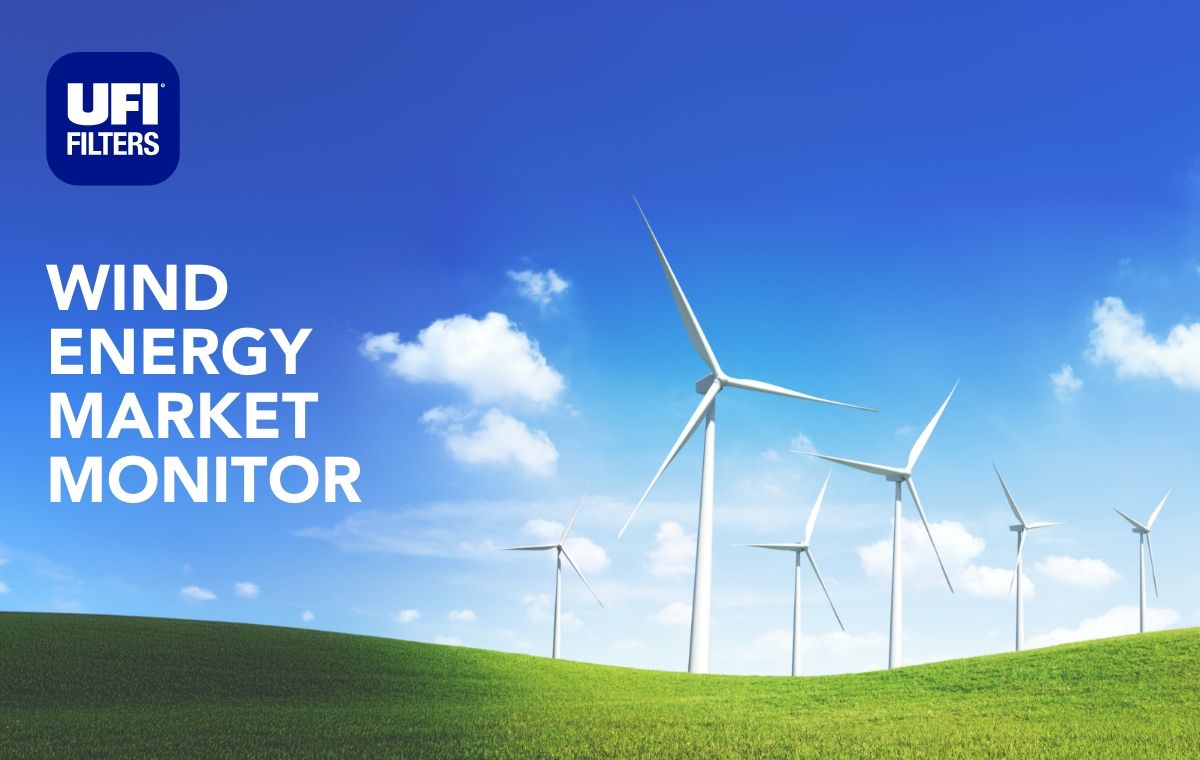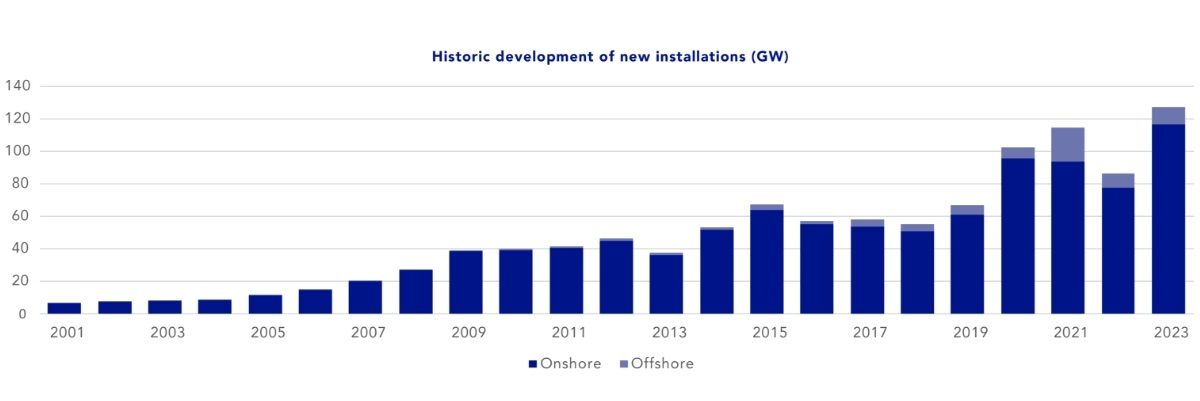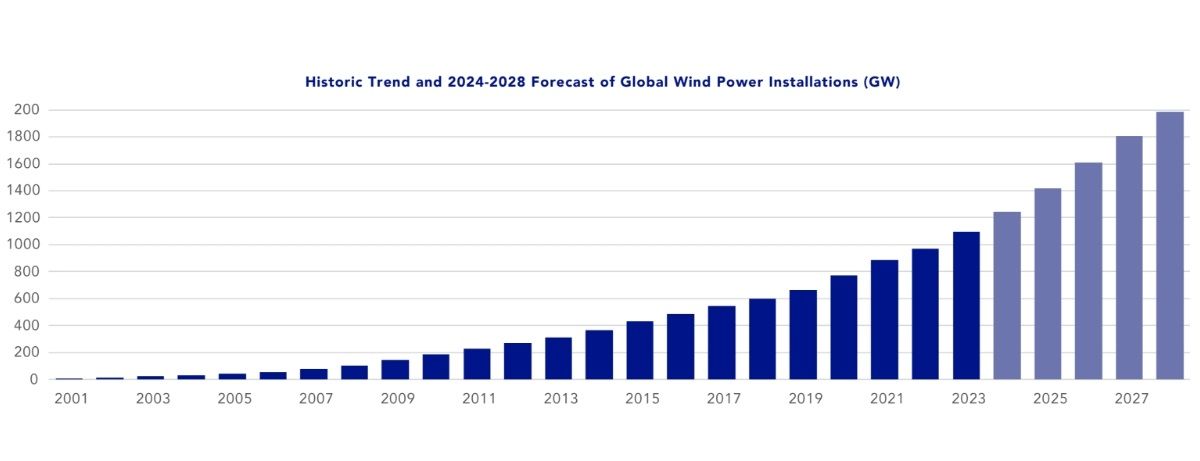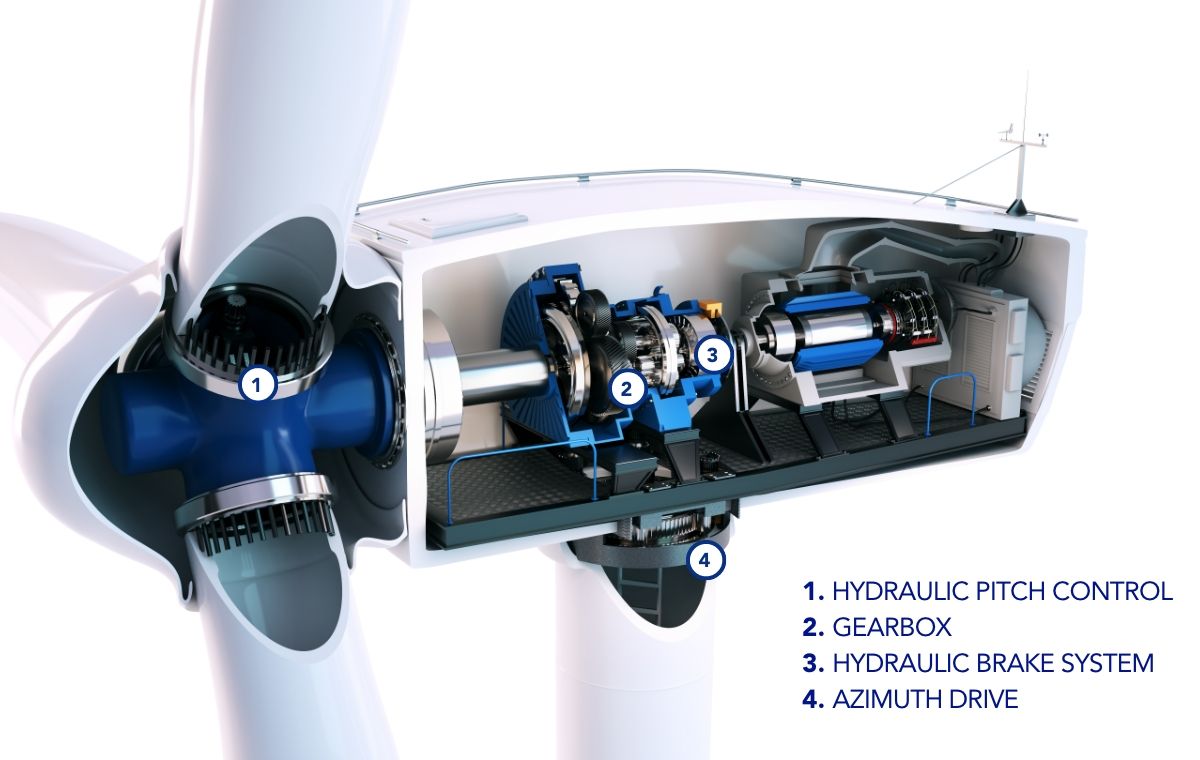
Wind power, an emerging renewable energy source, has a critical role to play in combating climate change and building a sustainable energy future.
According to the latest Global Wind Report (https://gwec.net/global-wind-report-2024/) from the Global Wind Energy Council (GWEC), 2023 saw the highest ever annual increase in onshore installed capacity (over 100 GW) and the second highest annual increase in offshore installed capacity (11 GW).

Source: Global Wind Report 2024
The symbolic milestone of a global installed capacity of 1 TW has been passed, and the target is to reach 2 TW by 2030.

Source: Global Wind Report 2024
Behind the imposing blades that capture the force of the wind, there is a complex system of hydraulic components that ensure the efficient and safe operation of the wind turbine.
Hydraulics at the service of wind turbines
Hydraulics technology can be used to harness the hydraulic power of a fluid to drive the mechanism of a wind turbine.
Through a circuit of pumps, valves and actuators, hydraulic oil transmits power and controls the movement of key elements:
- Blade control – modern wind turbines require advanced systems to adjust the pitch of the blades in response to changes in the wind. Hydraulic systems enable precise and rapid control, optimizing energy efficiency and production.
- Drive systems – wind turbine drive mechanisms, such as actuators and transmission systems, rely on hydraulics to ensure smooth and reliable operation. These components must withstand extreme environmental conditions and operate with low maintenance to ensure that uptime is maximized.
- Lubrication – hydraulic systems are essential for lubricating the gears and gearboxes of wind turbines. Effective lubrication reduces component wear, prevents breakdowns and increases overall turbine efficiency.
- Safety and control – braking and emergency systems rely on advanced hydraulic technologies to respond quickly in emergencies and ensure safe turbine shutdown in critical situations.
Where are the hydraulic filters in wind turbines?

The contribution of hydraulics to European goals
The historic COP28 adoption of a target to triple renewable energy by 2030, to accelerate the energy transition in line with the Paris Agreement, highlights the significant reliance on wind energy to achieve global climate goals.
In particular, the European Union has set ambitious targets for wind energy by 2030. The EU currently has a wind power capacity of 272 GW, and the target for 2030 is 425 GW.
Reaching this target will require significant growth in the production and installation of large wind turbines, as well as the parallel development of hydraulic technologies to support the expansion.
Indeed, hydraulics will play a key role in achieving these targets by helping to
- Increase the efficiency of wind turbines, enabling more energy to be generated and eliminating waste and inefficiency.
- Extend turbine life, ensuring reliable and safe operation over time.
- Reduce production costs by optimizing the replacement of spare parts and improving overall plant efficiency.
Hydraulics is therefore established as a key technology for the wind energy sector, making a vital contribution to the production of renewable energy, combating climate change and building a more sustainable future.
Thanks to technological innovation and continuous performance improvement, hydraulics will continue to play a key role in achieving the ambitious decarbonization targets set by the European Union for a future powered by clean and renewable energy.
UFI Filters Hydraulics, with over 30 years of experience in the field of hydraulic filtration, puts its expertise at the service of the wind energy sector.
We offer a wide range of high-performance filtration solutions specifically designed to meet the demanding requirements of wind turbines, ensuring optimal efficiency, reliability, and lifespan.
Download the Wind Energy Product Brochure or contact us for more information.
We will also be exhibiting at the upcoming WindEnergy Hamburg trade fair, on 24–27 September.
We look forward to seeing you at Stand 337 in Hall B5.